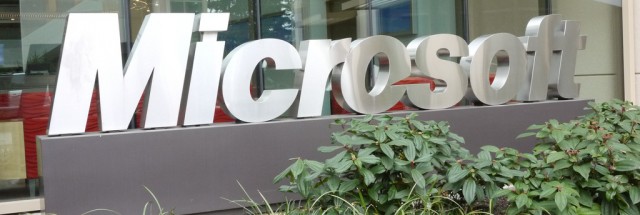
Microsoft has posted the results of the fourth quarter of its 2018 financial year, running up until June 30, 2018. Revenue was $30.1 billion (up 17 percent year-on-year), operating income was $10.4 billion (up 35 percent), net income was $8.8 billion (a rise of 10 percent), and earnings per share were $1.14 (an increase of 11 percent).
This brings the full-year revenue to $110.4 billion (up 14 percent on the 2017 financial year), with operating income of $35.1 billion (up 21 percent) and net income of $16.6 billion, a drop of 35 percent, attributed to the impact of the Tax Cut and Jobs Act’s $13.8 billion repatriation tax. Without that, the company would have been looking at a net income of $30.3 billion, up 18 percent on 2017.
Microsoft currently has three reporting segments: Productivity and Business Processes (covering Office, Exchange, SharePoint, Skype, and Dynamics), Intelligent Cloud (including Azure, Windows Server, SQL Server, Visual Studio, and Enterprise Services), and More Personal Computing (covering Windows, hardware, and Xbox, as well as search and advertising). This reporting structure has been retained even though the Windows division has been reorganized with responsibilities split between different groups.
Productivity group revenue was up 13 percent to $9.7 billion, with operating income up 20 percent at $3.5 billion. The gains were broad based: both commercial and consumer Office revenue were up (10 percent and 8 percent, respectively), with 29 percent growth in commercial Office 365 seats and a total of 31.4 million consumer Office 365 subscriptions. Dynamics revenue was also up 11 percent. The hit from the ongoing migration to cloud subscriptions continues; perpetually licensed commercial Office revenue was down 19 percent.
Microsoft reports LinkedIn’s revenue as part of the Productivity group, but it also breaks those numbers out separately: revenue was $1.5 billion, up 37 percent, with losses narrowing to $182 million, about half of what they were a year ago.
Intelligent cloud revenue was up 23 percent to $9.6 billion, with operating income up 34 percent to $3.9 billion. Again, the gains were broad, with both server and cloud revenue, and Enterprise Services revenue increased (up 26 percent and 8 percent respectively). While cloud adoption is growing—Azure revenue was up 89 percent—perpetual-license revenue was also up by 8 percent, showing continued demand for on-premises systems. Microsoft’s Enterprise Mobility suite now has 82 million seats, up 55 percent year-on-year.
More Personal Computing revenue was $10.8 billion, an increase of 17 percent, with $3.0 billion operating income, up 38 percent. A few days ago, Gartner and IDC reported that the PC market grew last quarter, with strong commercial sales more than offsetting declines in the consumer space; Microsoft’s numbers would appear to agree. Corporate Windows revenue was up 14 percent, slightly ahead of the overall corporate PC market, with consumer revenue down 3 percent. Windows cloud services were up 23 percent year-on-year.
Surface revenue was up 25 percent to $1.2 billion, a reflection of the stronger product line-up today as compared to a year ago. Gaming revenue was also healthily increased, up 39 percent to $2.3 billion. Xbox software and services revenue increased 36 percent, attributed to third-party titles, and Xbox Live monthly active users stand at 57 million, up 8 percent year-on-year. Search revenue was up 17 percent, with, as ever, the twin factors of increased revenue per search and increased search volume to thank.
All in all, a familiar tale: cloud services are growing (though Microsoft remains reluctant to offer concrete numbers on Azure), and Microsoft seems to be successfully converting customers away from perpetual licenses and over to Office 365. The corporate transition to Windows 10 is proving to be a boon for Windows revenue—and the PC market as a whole—though Gartner reckons this only has another two years or so to run before the upgrade cycle nears completion. But the consumer PC market remains sluggish, with little on the horizon to change that.
Surface has recovered from its particularly weak position a year ago, but it’s less clear that the device will be able to enter new markets or expand its reach. At least Microsoft is now trying to do that: the release of the smaller, cheaper Surface Go should give Microsoft’s hardware reach that it hasn’t had for several years. Surface Go should be a better cheap Surface than the company’s previous attempts in this category, but it’s going to be at least a couple of quarters before we’ll be able to see if that work has really paid off.
Be the first to comment